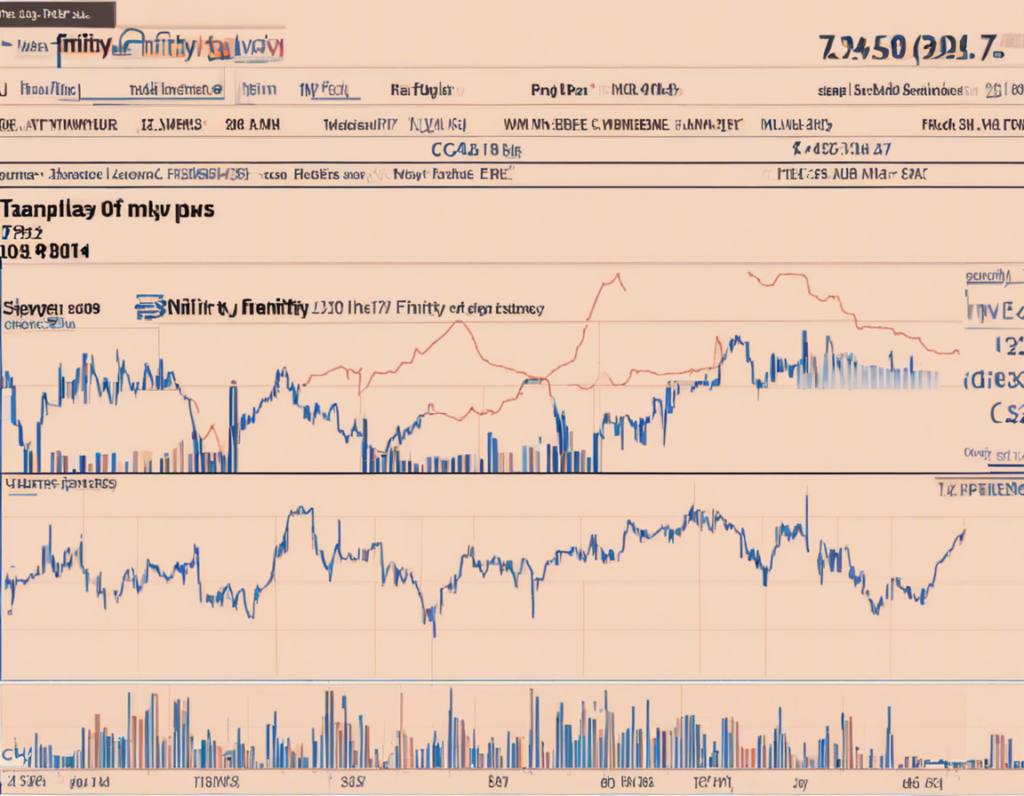Introduction
Finnifty Share Price is a topic that has garnered significant interest from investors and traders alike, given the dynamic nature of the stock market. Before delving into the intricacies of Finnifty share price movement, it is crucial to understand what Finnifty is and its significance in the financial world.
What is Finnifty?
Finnifty is a term that blends “Financial” and “Nifty,” representing the Financial Nifty Index. It is a stock market index that tracks the performance of top financial services companies listed on the stock exchange. The Nifty Financial Services Index, or Finnifty, provides insights into the overall performance and health of the financial services sector in India.
Factors Influencing Finnifty Share Price
Several factors can influence Finnifty share price, impacting investor sentiment and market trends. Understanding these factors is essential for investors looking to make informed decisions in the stock market.
1. Market Trends and Sentiments
Market trends and sentiments play a significant role in determining Finnifty share price movements. Positive market sentiment can drive up prices, while negative sentiment can lead to sell-offs and price declines.
2. Macroeconomic Indicators
Macroeconomic indicators such as GDP growth, inflation, interest rates, and government policies can impact Finnifty share prices. Economic stability and growth often lead to higher share prices, while economic uncertainties can result in volatility.
3. Company Performance
The financial health and performance of the companies included in the Finnifty index directly affect its share price. Strong earnings, growth prospects, and effective management can drive up share prices, while poor performance can lead to declines.
4. Regulatory Environment
Regulatory changes and government policies can impact the financial services sector and, subsequently, Finnifty share prices. Investors must stay informed about regulatory developments that can influence stock prices.
5. Global Events
Global events, such as geopolitical tensions, economic crises, and trade wars, can have ripple effects on the stock market, including Finnifty share prices. Investors should consider global factors when analyzing market trends.
Benefits of Investing in Finnifty Shares
Investing in Finnifty shares can offer several benefits for investors seeking exposure to the financial services sector and diversification in their portfolios. Some key benefits include:
1. Sector-specific Exposure
By investing in Finnifty shares, investors can gain exposure to the financial services sector, which plays a vital role in the economy. This sector includes banks, insurance companies, NBFCs, and other financial institutions.
2. Diversification
Diversifying a portfolio with Finnifty shares can help mitigate risk by spreading investments across different companies within the financial services sector. Diversification can potentially enhance returns and reduce overall portfolio volatility.
3. Growth Opportunities
The financial services sector offers growth opportunities driven by factors such as increasing financial inclusion, digital transformation, and evolving customer preferences. Investing in Finnifty shares allows investors to capitalize on these growth prospects.
4. Dividend Income
Many companies in the financial services sector offer attractive dividend yields, providing investors with a potential source of passive income. By investing in Finnifty shares, investors can access dividends from top-performing financial companies.
5. Liquidity
Finnifty shares are widely traded on the stock exchange, ensuring liquidity for investors. Liquidity allows investors to buy and sell shares easily without significantly impacting the market price.
FAQs (Frequently Asked Questions)
1. What is the historical performance of Finnifty shares?
Answer: The historical performance of Finnifty shares depends on market conditions, sectoral trends, and economic factors. Investors can analyze historical data to assess past performance and make informed decisions.
2. How can I invest in Finnifty shares?
Answer: Investors can invest in Finnifty shares through stock brokers, online trading platforms, or mutual funds that track the Finnifty index. It is essential to conduct thorough research and consider one’s investment goals before investing.
3. What are the key risks associated with investing in Finnifty shares?
Answer: Key risks associated with investing in Finnifty shares include market volatility, regulatory changes, economic downturns, and company-specific risks. Investors should assess risk tolerance and diversify their portfolios to mitigate these risks.
4. Can Finnifty share prices be volatile?
Answer: Yes, Finnifty share prices can be volatile due to various factors such as market sentiment, economic indicators, global events, and sector-specific developments. Investors should be prepared for price fluctuations and monitor market trends.
5. How often is the Finnifty index rebalanced?
Answer: The Finnifty index is rebalanced periodically to reflect changes in the financial services sector. Rebalancing involves adding or removing companies from the index based on predefined criteria to maintain its representativeness.
Conclusion
In conclusion, understanding Finnifty share price movements requires a holistic view of market dynamics, sectoral trends, and economic indicators. By staying informed about factors influencing Finnifty shares and conducting thorough research, investors can make well-informed decisions in the stock market. Investing in Finnifty shares offers sector-specific exposure, diversification opportunities, growth potential, dividend income, and liquidity benefits for investors seeking to optimize their investment portfolios.
